What instrument is used to measure illumination
A light meter allows you to check the level of illumination in any room in a few minutes. With its help it is possible to control compliance with sanitary norms, to diagnose the uniformity of illumination in different parts of a room, office or workshop. To perform work in industry you need a certified equipment, for the private sector will be suitable ordinary.
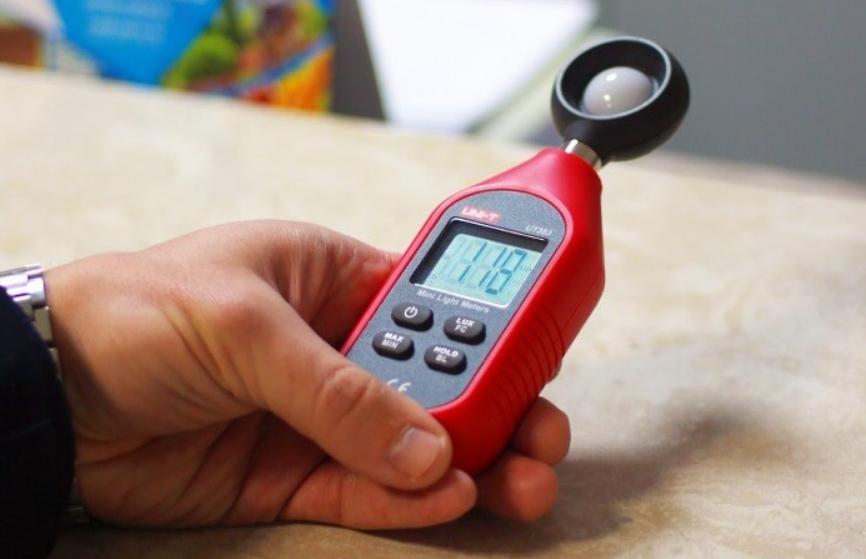
What is a luxmeter
If translated from the Greek, the name consists of two words "light" and "measure". The instrument is used to check the level of illumination. It is a photometer, but it can also be used to control other criteria: the brightness of light, the coefficient of pulsation, it all depends on the model. Most often it is used for such purposes:
- Checking the quality of lighting in order to add fixtures or move them to another location, if required.
- Checking for compliance with regulations. This is necessary in offices, production areasoffices, classrooms and kindergartens preschools.
- Selection of lighting mode in places of precision work.
- Checking the performance of light sources in greenhouses, greenhouses.
- Selecting the mode of operation of outdoor advertising, signal lighting, etc.
By the way! The device helps to quickly select the exposure during a photo shoot.
Device and principle of operation
The main working unit is a semiconductor-type photocell. It transfers the energy from the light quanta to the electrons. The electric flow thus generated can be converted in two ways.
In analog instruments, a galvanometer, which causes the pointer to move, makes it possible to take a reading. Digital equipment uses an opto-electronic converter. It digitizes the data and displays it.
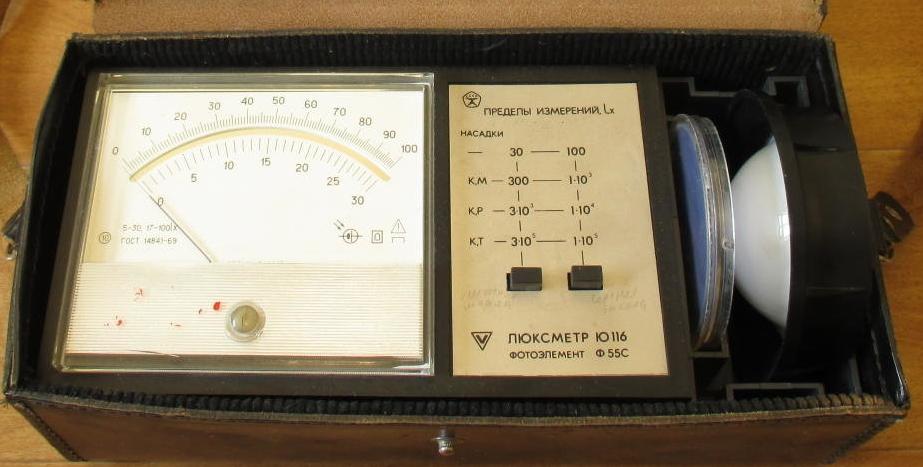
Essentially, the design always consists of a sensor and a converter. All measurements are made in Lux. The range is wide, from tenths to hundreds of thousands of lux.
Material
Most often the body is made of impact-resistant plastic. Its quality depends on the raw material and the cost of the device, in expensive models the material is durable, all elements are precisely fitted to each other.
Often there are also rubberized pads on the body, which make it more convenient to grip and prevent the device from slipping out of the hands. As a rule, ergonomics is carefully thought out to ensure the greatest comfort.
The split versions have the photo sensor in a separate housing that protects it from shock. The elements are connected by twisted wire in abrasion-resistant insulation.
Weight and Dimensions
Typically, the weight of the equipment does not exceed 500 g. The most compact versions weigh a little over 100 grams, which simplifies storage and carrying and provides ease of use.
As for dimensions, they vary widely. The height is usually 8 to 20 cm, while the width can be 5 to 8 cm with a thickness of 2 to 4 cm. In split layouts, you must also consider the photoelectric cell, which is usually small in size.
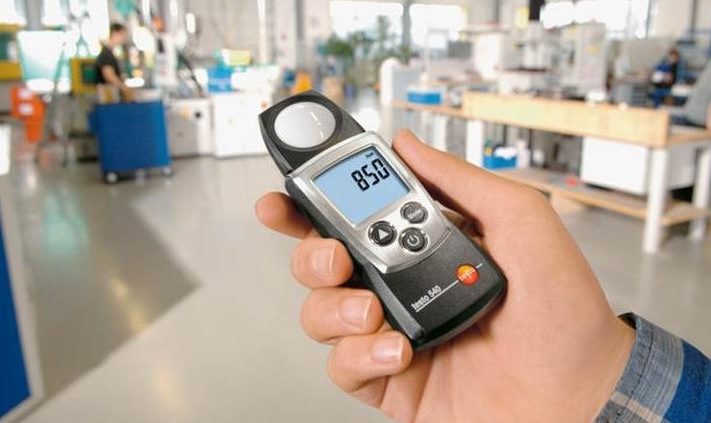
Accuracy, accuracy and verification
Initial verification of all devices registered in the State Register of Measuring Instruments is carried out after their repair or when putting a new product into operation. This is a general procedure relevant for devices whose readings are used in the framework of official inspections. The verification is not necessary for the instruments used for personal needs..
Further checks are carried out at intervals of at least once a year. Error figures are checked to determine accuracy. If necessary, calibration of the photocell is made, most often a spectral correction of the photosensor is required.
GOST 8.023-2014 gives all the information on checking the lux meters. There you will find the necessary information as well as the conditions for verification.
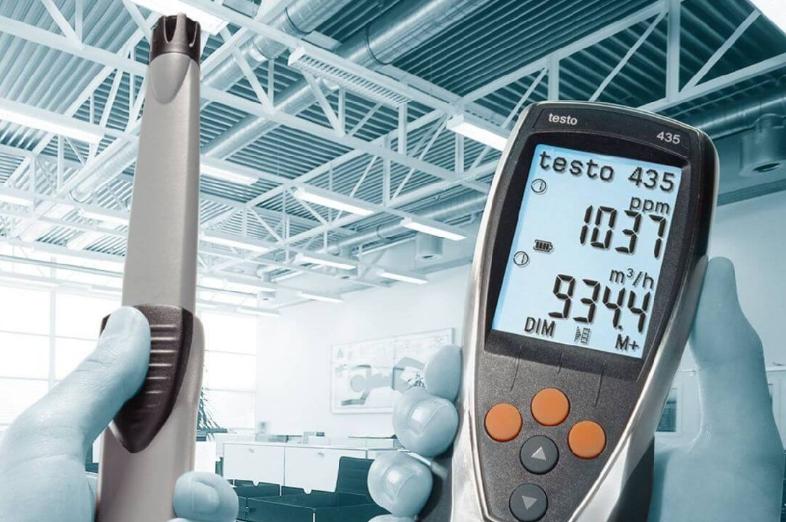
Types of devices
Equipment is divided into several groups depending on the design features and layout of the main modules. All variants provide the necessary measurement accuracy and are selected for specific conditions of use.
According to the type of scoreboard
There are two main varieties here:
- Analogue variants have a scoreboard in the form of a scale with an arrow. They are characterized by simplicity, low price and reliability. Usually such devices work for many years, but they are not highly accurate.
- Digital Luxometers are much more complicated and expensive. But they can measure readings up to tenths of lux. This variant is more often used.
According to the location of the photocell
According to this feature, there are also two types of devices:
- Monoblocks. In them, the photocell is built into the body of the equipment. Usually they are small and well suited for those who take a lot of measurements. More often the design has an elongated shape, the lens is located in the upper part, and the display and controls are underneath it.
- Models with a remote indicator are a body and a photocell on a flexible cable about half a meter long. They are convenient for measurements in hard-to-reach places, it is not difficult to place the photocell even in a limited space.
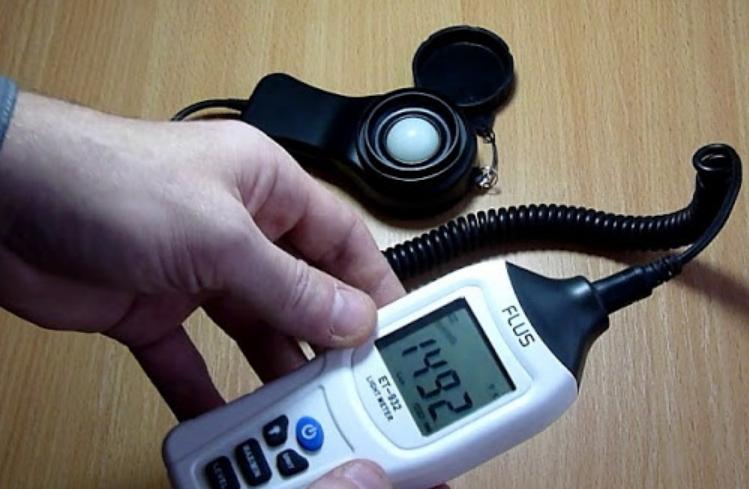
There are monoblocks where you can detach the sensor and use it as a remote if necessary.
Video review: Illuminance meter LX1010BS (luxmeter).
By functionality
Devices differ in technical capabilities and are divided into three groups:
- Standard .. The simplest and cheapest, works quickly, measures only the level of illumination. The measurement error can be quite large.
- Semi-professional .. Accuracy is an order of magnitude higher. In addition to illumination they can check the pulsation of light, its brightness and some other parameters. Often used in businesses.
- Professional, expensive and accurate. They have a built-in processor that calculates many parameters independently, calculates the average illuminance. Thanks to the memory the results are stored. The most advanced models transmit real-time data to a computer over a wireless network. Additional light filters allow high accuracy of results.
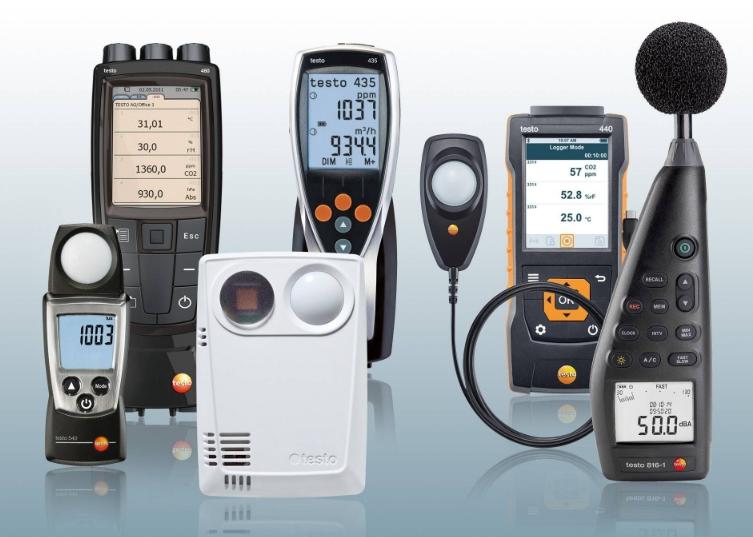
Other features
There are several other features by which to distinguish between lux meters:
- Case material. Most often it is plastic with an embossed surface or an ergonomic version, it fits well in the hand. Many use a rubber overlay to improve grip and fall protection.
- Type of power. Usually the devices have a built-in battery, which is charged with the device that comes with it. The simpler models run on batteries, which need to be replaced from time to time.
- Size and weight. Household options are small and weigh a little, have compact dimensions. More advanced models are an order of magnitude larger, but they also rarely weigh more than 500 g.
Video review: UNI-T UT383 Luxmeter.
What types of light the indicator measures
Since the spectrum of different light sources is different, each type uses its own instruments adapted to specific conditions. Typically, the following are measured types of light:
- Sunlight. These are usually used by scientists and researchers.
- Ultraviolet radiation. Such devices are in demand in forensics, science, and medicine.
- Neon light. This group of devices is needed in the automotive sphere and advertising.
- Artificial light. This includes all types of lamps - incandescent, fluorescent, LED, etc.
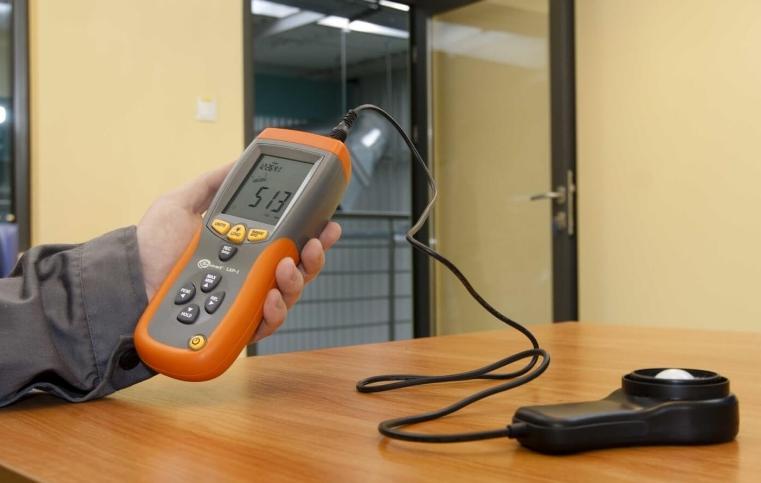
How to use a luxmeter
It is not difficult to understand the measurement process, the main thing is to consider the design features and follow the simple instructions:
- First of all, study the instruction manual. As a rule, there is a detailed description of the process - from switching on to entering the settings depending on the indicators to be checked.
- Turn on the device and install the appropriate lens, if they are replaceable. Set the photocell in a horizontal position at the required height, press the appropriate button and take the result.
- If the device is professional, you need to adjust the type of measurement, set the sensitivity depending on the lighting conditions.
From the video you will learn: How to measure illumination in the room Using a smartphone.
With the luxmeter you can quickly determine the illumination in any room or outdoors. The main thing is to set it up properly and place it in the right place.